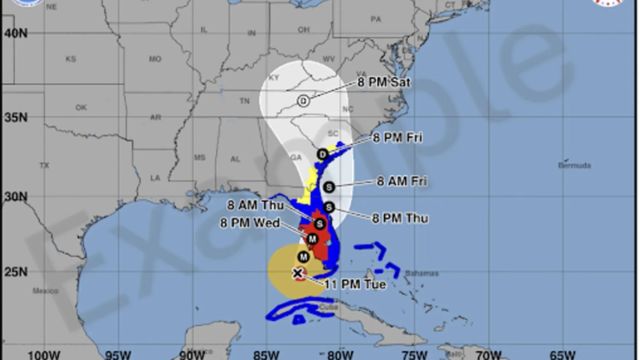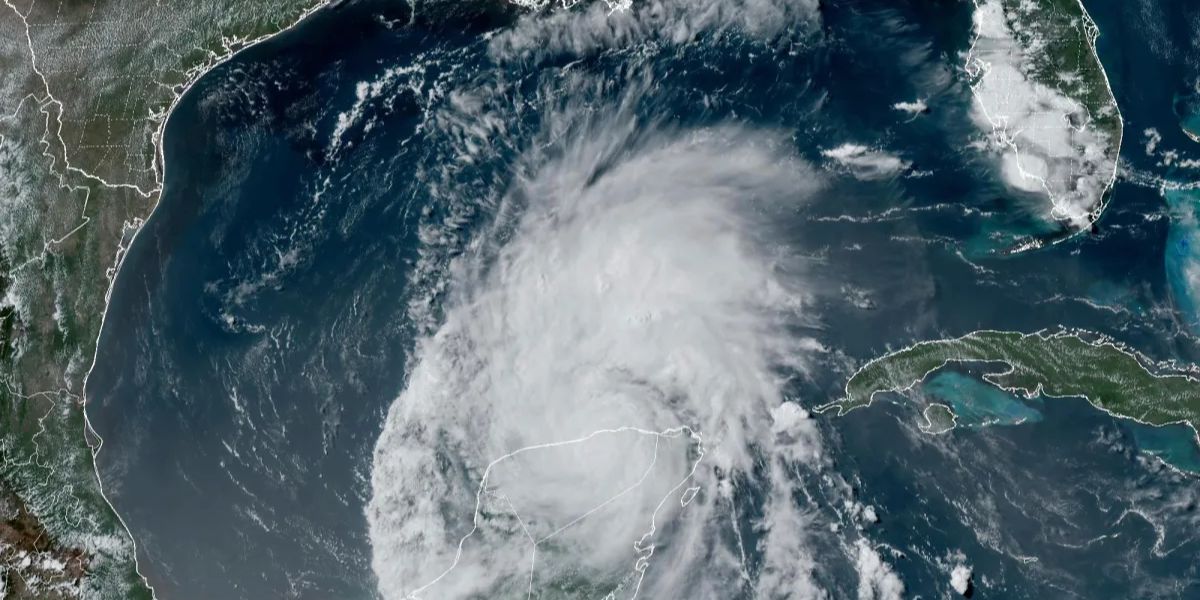WFCN –
The new cone of concern will be launched in a matter of weeks, and the National Hurricane Center is eagerly anticipating it.
Midway through August, right in the thick of hurricane season, the experimental cone graphic for tropical cyclone forecasts will be released.
Extra rainfall is anticipated in Florida due to a tropical wave, according to the Tropics Watch for July 23.
For counties in the heart of the storm’s projected course, the new cone will bring additional watches and warnings for tropical storms and hurricanes. At this time, the warnings and watches are only visible for counties around the shore.
How is the “cone of uncertainty” developed by the National Hurricane Center unique?
To see how the cone will change starting in August 2024 compared to the past, use the slider on the right.
Warnings and watches for counties in the interior will be reflected in the new experimental cone.
At present, the course, timing, and anticipated path of tropical storms and hurricanes, as well as any coastal area watches and warnings, are displayed on the NHC cone of concern.
The updated image will keep all the relevant details but also show how far inland regions could be affected.

The National Hurricane Center stated that the warnings and watches will be given more weight than the cone.
Distinctions that you’ll notice:
Not limited to coastal regions; watches and warnings extend inland as well.
The full five-day prediction is shaded in white transparency, as opposed to the four- and five-day forecasts which are stippled in white.
SEE MORE –
Emergency Support: FEMA Provides $750 to Help Hurricane Beryl Victims
Due to the prior focus on coastal watches and warnings, many Floridians and tourists living inland were uninformed of the potential wind hazards posed by an impending storm. Inland warnings and watches are the focal point of the new cone.
New cone of worry to be launched by National Hurricane Center on schedule
According to Jamie Rhome, Deputy Director of the National Hurricane Center, “It’s going great, and we’re right on track” to start the new cone in August.
Rhome stated that the first three storms of the 2024 Atlantic hurricane season were utilized by forecasters to ensure that everything was proceeding according to plan.
What is the expected release date for the new NHC cone?
“We will launch as predicted on or around Aug. 15,” he added.
Launching during a storm could be confusing and disruptive, so we’d rather not do that. The new cone could be launched earlier than Aug. 15 if a storm is forming early, but if it’s really quiet, we could launch on Aug. 15.
Updating the cone with inland wind warnings is the most significant modification. For a long time, the National Weather Service has been issuing those. So that consumers don’t have to go to two separate websites, we’re adding that information to the (NHC) cone to give a more holistic view of the threat. Everything is combined in a smooth manner.
Updated Hurricane Center Aims to Reduce Saffir-Simpson Scale’s Presence
I’m thrilled. It’s a huge win for our clients and our organization. Rhome maintained that it was an improved method of communication.
“We hope it gets people to stop fixating on less reliable tools like the Saffir-Simpson Scale. There are more accurate ways to convey actual wind impacts in your community and at your home.
“The Saffir-Simpson Scale doesn’t allow you to understand what the actual impact may be where you live. The Saffir-Simpson scale tells you peak wind (associated with a tropical storm or hurricane) but it may not be that over your community.
“A Category 5 hurricane over Vero Beach doesn’t mean Category 5 winds everywhere in Vero Beach. That doesn’t allow you to deduce impact or threats” where you live. “People misinterpret local impacts, with some overestimating the threat and some underestimating the threat.”
“Explicit watches and warnings for high winds (in your county) allows you to prepare for tropical storms or hurricanes based on where you are.”
Uncomfortable with change? NHC plans to keep old cone around for awhile
“The existing cone will still be there. If you’re not ready to pivot to the new cone, the old one will still be widely available,” Rhome said.
“Any time you launch something new, initially there can be a spin-up education period. There’s going to be a period for growth as people get used to new way of viewing their risk.”
On the National Hurricane Center’s website , you’ll have to click on a link to see the new cone.
“The new one will replace the existing cone after one to two years of feedback.
“If there’s clear feedback — the colors aren’t right, something isn’t clear, the legend is confusing — then we’ll make more changes. We want feedback to verify the changes are accomplishing what was intended. My guess is that there will be opinions for more additions and refinements and then there will be another year of testing with more feedback” before the new cone replaces the current cone.
When the new cone is pulled up on NHC’s website, there will be a link to short survey. Rhome said every bit of feedback received will be looked at to determine how to proceed.
